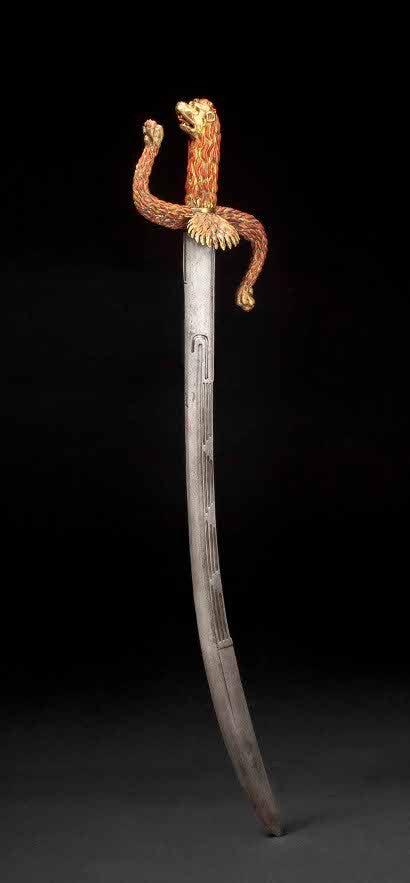Karsten Klingbeil is a celebrated artist, construction mogul, world designer and antique militaria collector. Born in Stettin in 1925, he grew up in Berlin from 1936 on, and as early as 14 years old he knew that he wanted to become a sculptor.
Whilst his personal artistic expression had to wait until he sold his construction business in Berlin and retired at 60, Klingbeil spent most of his life collecting: his hoard was built up over 50 years.
Indeed the private armoury or Rüstkammer of the renowned sculptor includes 600 objects of historical significance.
 Karsten Klingbeil's extraordinary antique suits of armour (Click to enlarge) |
Klingbeil chose a remarkably ambitious path in assembling his collection and provided it with the appropriate display - of museum quality - never losing sight of his aim to document the complete development of arms and armour from the 5th to the 17th centuries.
In this manner Karsten Klingbeil has vividly illustrated the evolution and artistic development of body protection in war and in sport.
It has been his vision to display the entire process from the invention of the harness from the early Middle Ages to the Early Modern Period with special focus on the Golden Age of courtly art and patronage during the Renaissance and the early Baroque.
 A short-sword for the lion-hearted |
The core of the collection is formed by 40 complete armours ranging in date from the 15th to the 17th centuries.
In addition there are 120 helmets spanning the same period, hafted weapons, swords, daggers, shields and luxurious antique firearms with inlaid fruitwood stocks: in total the collection has an historical span of 13 centuries.
This is going to be the most important collection of antique arms and armour offered for sale at auction since the landmark Hever Castle auction at Sotheby's, London, in 1983.
The armours include a Milanese example dating from the period 1580-90, from head to toe finely etched and gilded and attributed to the workshop of the renowned master Pompeo della Chiesa.
 This Venetian lacquered and gilt parade shield could distract artistically curious attackers |
A similarly richly ornamented ceremonial glaive from 1605-10 is attributed to the palace guard of Cardinal and founder of the Borghese art collection, Scipione Caffarelli- Borghese.
A Venetian lacquered and gilt parade shield in the Ottoman taste, circa 1580, was made for the guard of a dedicated art patron, Wolf Dietrich von Raitenau, Prince-Archbishop of Salzburg.
Finally, and among the most exotic pieces in the collection is a parade sabre with gilt-copper hilt inset with red coral; this striking ensemble dates from circa 1620-30 and reflects the taste for the exotic at the court of the Electors of Saxony.
Klingbeil has now decided to sell this incomparable collection which he has gathered and cherished for several decades.
 Stylish knightwear - the Pompeo della Chiesa suit of armour |
He chose the two specialised and well known auction houses Pierre Bergé & associés in Brussels and Hermann Historica oHG in Munich, stating on the occasion of announcing his intention to sell:
"I am pleased that I found these two auctioneers, partners that appreciate the collection and that are able to optimally present the collection thanks to their expertise as well as their presence on an international market to new owners according to my expectations."
The first part of the antique arms and armour collection will be offered in December, and alongside it will be offered another collection of Klingbeil's, which almost holds to the theme of celebrating fine armour: his collection of rare crustaceans.
These 150 specimens include a very rare and alarming spider crab of three metres spread.
Klingbeil also collects butterflies - something of a counterpoint to the robustness of the military collectibles, but a reminder that an artistic sense of design and beauty runs through all his work and collecting alike.






